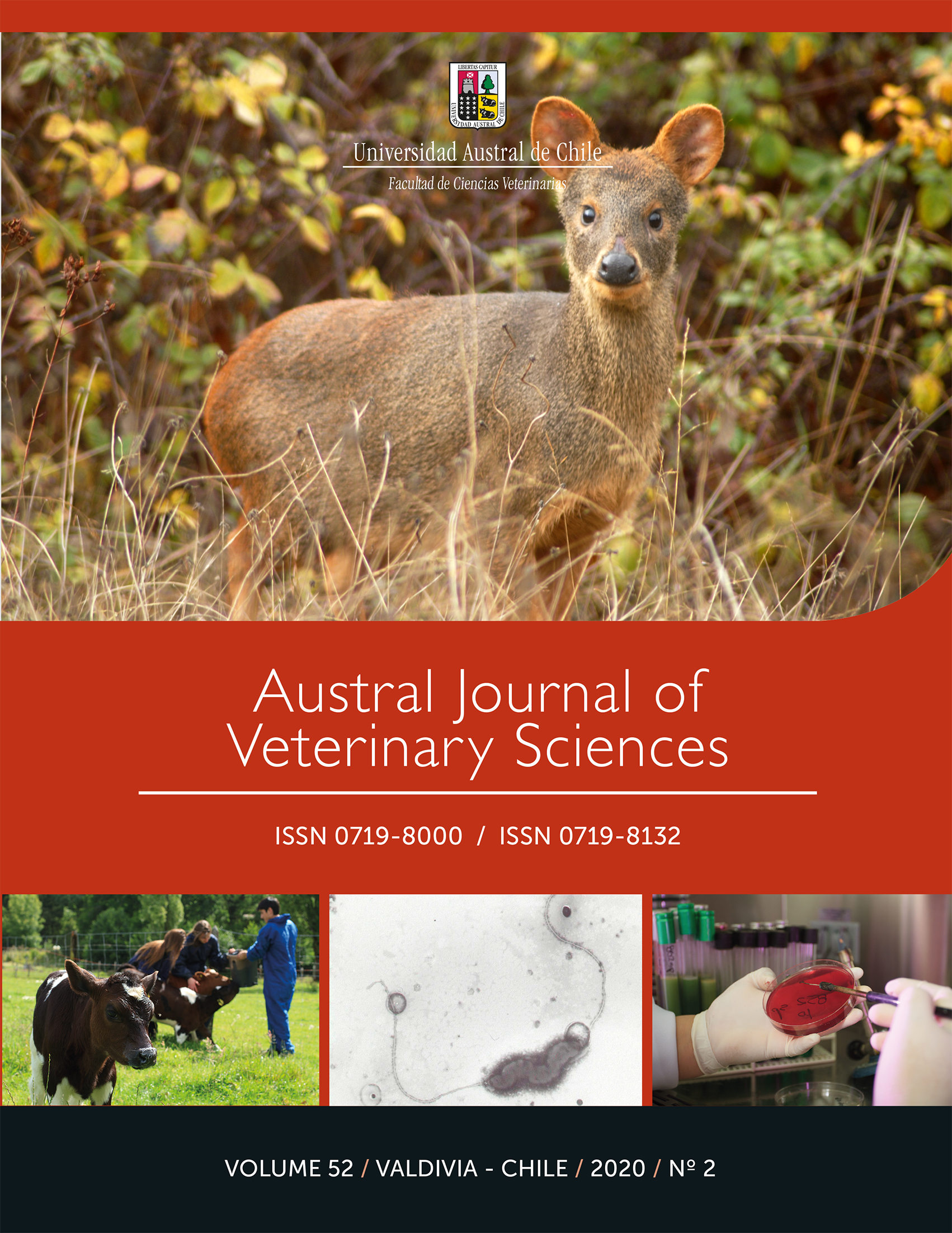Andrological characterisation of Chilean purebred stallions
Contenido principal del artículo
Resumen
Chilean purebred horses are widely used in Chile for rodeo and farm work. Despite the importance of the breed, systematic studies characterising their andrological variables are lacking, making stallion evaluation and selection difficult. This study aimed to determine whether age and seasonality affect seminal, spermatic, gonadal and endocrine variables of 15 Chilean purebred stallions. The animals were studied over a year and were separated into a young group (n=6) (5 to 12 years) and an aged group (n=9) (13 to 25 years). The variables evaluated were: total seminal volume (mL), free gel seminal volume (mL), sperm concentration (106 x spermatozoa/mL using Spermacue refractometer TM), sperm progressive motility (conventional microscopy (%)), sperm vitality (Eosine-Nigrosine stain (%)) and sperm morphology (Hematoxylin Eosin stain (%)), testicle volume (cm3) (ultrasound Weld 3000V, 5MHz), plasmatic testosterone (ng/mL) and estrogen (pg/mL) concentration determined by radioimmunoassay. To determine the statistical difference and correlation between variables, ANOVA and Pearson’s correlation were used, respectively (P<0.05). Most of the andrological variables were affected by age and season and although not significant, the values obtained were higher in young stallions during summer. Progressive motility (70 ± 12.1 %), sperm normal morphology (90 ± 1.7 %) and plasmatic estrogen (6.49 ±1.8 pg/mL) reached statistical significance to plasmatic testosterone (0.3 ± 0.08 ng/mL) (P=0.01), sperm concentration (253 ± 59.5 x 106 sperm/mL) (P=0.03) and testicular volume (463.4 ± 90 cm3) (P=0.002) variables. Despite the results, we suggest that all these variables should be considered during stallion selection since andrological variables were neither correlated with testosterone nor the oestrogen plasmatic concentration. The results provide parameters that should be considered during the evaluation and selection of Chilean purebred stallions to avoid the extrapolation of data from other breeds.

